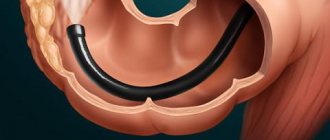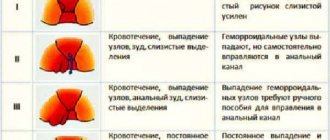How to properly prepare for anesthesia
The outcome of the operation depends on how well the patient can prepare for the upcoming operation. Preparation for anesthesia of the patient occurs the day before the operation and ends by the time he finds himself in the operating room. During the examination, the anesthesiologist pays attention to the psychological state of the patient, notes how wide he can open his mouth, assesses the condition and how pronounced the superficial vein is. At this moment, the doctor notes the features of the skin, nail plates, pupil color and respiratory movements. In short, he pays attention to everything that can cause complications during general anesthesia.
Is it possible to eat
There are basic recommendations for eating before anesthesia, developed back in 1999. It should be noted that the recommendations for eating in preparation for surgery and for anesthesia are different.
Time for evacuation of various types of food from the gastrointestinal tract: Liquids (tea, juices) - 2 hours; Milk - 5 hours; Enteral mixtures (special nutrition) 4 - 6 hours; Light food - 6 hours; Meat, fat 8 and > hours. A meta-analysis included in Cochrane (2003) shows that fasting or drinking liquids 2 hours before surgery does not affect gastric volume and pH. National and European anesthesia guidelines recommend stopping liquid intake 2 hours and solid food 6 hours before surgery. ERAS, 2012.
Why is it prohibited?
Eating food before an upcoming operation under general anesthesia is fraught not only with unpleasant consequences, but also with dangerous complications. There are quite frequent cases in surgery when, during anesthesia, the patient begins to vomit, and the vomit flows out into the lungs. Also, under the influence of general anesthesia, the patient's muscles are relaxed. Food from the stomach can spontaneously leak out and enter the respiratory tract, thereby causing pneumonia, which will be very difficult to cure.
But there are some peculiarities here. Food itself is not an aggressive environment, unlike gastric juice. This is why you can sometimes hear from doctors: “It would be better if you had eaten!”
To summarize, we can draw the following conclusions when preparing for general anesthesia:
- Yes, you can, the main thing is to meet the deadlines.
- On the day of surgery, you can drink a glass of sweets 2 hours or more before
- Always check with your anesthesiologist about the time intervals for eating on the eve of anesthesia.
Purgation; bladder using a catheter
For subsequent cleansing of the intestines, the surgeon prescribes a cleansing enema on the preoperative day. The morning before the operation, the enema is repeated. Before “major” operations, a urinary catheter is placed directly in the operating room. Since the procedure is quite unpleasant, especially for men, the catheter can be inserted while the person is under anesthesia. In order to install a urinary catheter, you need to have the necessary skills, so a nurse should do this, and in special cases a urologist is called, for example, with severe prostate adenoma.
Hygiene procedures
In order to minimize the risk of infection, the patient needs to take a shower, but this can only be done if there are no instructions from the doctor to prohibit the hygiene procedure. In the morning, before the operation under general anesthesia, it is better to quit smoking if possible; you must brush your teeth. If there are crowns or unhealthy teeth in the oral cavity, then it is necessary to undergo treatment by a dentist in advance, since when a ventilator is introduced, loose teeth may fall out, which will lead to blockage of the airways.
Is an enema required before childbirth?
Quite recently, upon admission to the maternity hospital, a woman in labor was required to have an enema.
There was an opinion that an empty intestine reduced the risk of contamination during pushing and removed unnecessary support for the baby's head, which, passing through the pelvis, also encountered a mass of hard feces.
The embarrassing moment for all women was also excluded when, during pushing, they released feces.
Today, with the availability of a mass of disposable napkins of varying quality, it is noted that there is no need to be afraid of blocking the birth canal when a woman in labor has had spontaneous bowel movements in the last 24 hours.
During an internal examination of a woman in labor, the gynecologist does not feel the presence of hard feces.
If bowel movement occurs during childbirth, then disposable sterile pads are immediately thrown away along with the feces, and fresh pads protect the newborn from infection.
Doctors are confident that the risk of infection is much higher when performing an enema.
Premedication
The premedication section is the least developed in modern anesthesia. Doctors looked for a way out of this problem in different ways. Some studied new, more effective drugs, some used drugs with a multidirectional spectrum of action in combination, and the majority used atropine and promedol as standard. But as practice has shown, this method of premedication is not effective.
All anesthesiologists had the same goal: it was necessary that drugs that give the desired effect also ensure the constancy of homeostasis and do not destroy compensatory mechanisms. Joint studies of anesthesiologists and psychiatrists have shown the need for individual premedication, which should be based on the patient’s reaction to the upcoming operation. After all, the reaction of different patients is very different, from isolation to anger and melancholy. This condition affects the course of anesthesia and is expressed by endocrine disorders, which in turn lead to instability of vital organs. This is why individual premedication is so important.
Why is premedication needed?
2-3 hours before the upcoming operation, the doctor carries out individual premedication, which is what is called the complex use of medications. Carrying out premedication techniques is necessary to relieve psychological stress, prevent unwanted reactions, reduce bronchial secretion, and also to subsequently increase the analgesic and anesthetic properties of narcotic drugs. A whole range of pharmacological agents can achieve this effect. For mental sedation, tranquilizers are used; thanks to atropine, the secretion of the mucous membranes and salivary glands can be reduced.
Drugs used
Premedication includes drugs from several groups: sedatives, antihistamines, as well as drugs that reduce the functioning of muscles and glands.
Among the sedatives in medical institutions there are and are most often used:
Among the antihistamines in premedication, they have found wide use:
Contractile function blockers used in premedication include:
In some cases, narcotics are administered to reduce the dose of anesthetic. All drugs are administered intramuscularly if the patient is undergoing a planned operation. If emergency surgery is necessary, an intravenous catheter is used to administer the necessary medications. In this case, the superficial vein serves as the most convenient option for installing a catheter.
Preparing for anesthesia
The doctor helps the patient prepare for general anesthesia in several stages.
The first stage includes initial preparation; in the evening of the preoperative day, the patient is prescribed a long-acting sleeping pill. Adequate sleep and a good emotional background are one of the components of a successful anesthesia.
The second stage begins directly on the day of surgery. It is at this stage that the patient is given blockers. These drugs are necessary when a device for artificial ventilation of the lungs will be used, and also in the case of surgery on a muscular organ. Then antihistamines are introduced, they make it possible to avoid allergic reactions to the anesthetic and substances that will subsequently enter the blood. Under the influence of these drugs, a person gets rid of tension and relaxes.
Before performing local anesthesia
When performing local anesthesia, an anesthesiologist is not present; surgeons do an excellent job with this method of pain relief themselves. Also, before administering local anesthesia, premedication is not required. If the patient is scheduled for surgery with local anesthesia, then hygiene procedures can be used.
An enema before surgery provides preliminary removal of intestinal contents. A simple procedure helps prevent complications and makes the surgeon’s work easier. Cleansing is necessary during interventions on the abdominal organs: the gastrointestinal tract, urological and gynecological operations, and the use of laparoscopy techniques.
Artificial stool retention helps eliminate complications of the early postoperative period for any disease, relieves the patient from straining, and ensures wound healing. In hospitals, nursing staff are responsible for the correct implementation of instructions for preparing for surgery.
Colonics
The procedure for cleansing the intestines in a clinical setting is called colon hydrotherapy or colonics:
- Cleansing is carried out using a special apparatus.
- A hose is inserted into the patient’s rectum, through which clean water or herbal infusion is supplied in portions to the digestive tract.
- The device for hydrocolotherapy is designed in such a way that the waste liquid is removed into a special reservoir.
- The manipulation continues for about 20-40 minutes.
The main advantage of the procedure is that it allows you to remove feces from all parts of the intestinal tract and minimize the risk of infection during surgery.
Hydrocolotherapy is a significant burden on the body, so it is carried out only if there are indications for this particular method of cleansing the intestines.
Clearing the digestive tract and intestines of feces is an important part of preparing for surgery.
The procedure can be carried out using pharmacological drugs, an enema or hardware techniques.
The most appropriate method of cleaning is determined by the doctor, based on the specifics of the upcoming surgical intervention and the individual health characteristics of the patient.
Duphalac
Duphalac is a lactulose-based laxative. Available in the form of a viscous yellowish syrup, ready for use. Duphalac is available in syrup form. To prepare for surgery, it is recommended to use about 100-150 ml of the drug . In most cases, doctors prescribe Duphalac as an adjuvant in combination with a cleansing enema.
The product stimulates peristalsis and softens feces, facilitating their easy removal. Duphalac has a hyperosmotic effect and helps increase the contents of the large intestine.
Hydrocolotherapy is a significant burden on the body, so it is carried out only if there are indications for this particular method of cleansing the intestines.
Why is an enema done before surgery?
The intestines of an adult with a normal diet contain up to 8 kg of feces. They contain waste secretions, bacteria, and toxins. Normal digestion is accompanied by gas formation, swelling and collapse of intestinal loops, contraction of the muscle layer in the form of waves of peristalsis. Even at rest, the intestines form wave-like movements. A patient with constipation may experience fecal blockages, sudden dilatation, and swelling of the loops of the small and large intestines.
Let us imagine the position of the operating surgeon when opening the abdominal cavity. The doctor tries to minimize the incision and choose the best access to the intended intervention site. When the intestines are clogged, immediately after opening the peritoneum, a nearby swollen loop crawls out into the wound on its own. It is difficult to put it back, the rest of the intestine makes it difficult to find the pathology and assess the severity of the lesion.
- The risk of traumatic damage to the mesentery, blood vessels, disruption of the integrity of the intestinal wall, and nerve fibers increases sharply.
- With the laparoscopic approach, the view of the operating area is reduced.
- The constant threat of feces entering the abdominal cavity and severe peritonitis requires preliminary maximum cleaning of the intestines and removal of gases.
If the patient is to be operated on under general anesthesia, this means not only pain relief, but also complete muscle relaxation. To limit the entrance “gate” of infection through an open wound, complete atony is required. But the loss of contractility of the anal sphincters causes arbitrary leakage of urine and feces and violates the sterility of materials and linen. Due to the same relaxation of the esophagus, stomach contents can enter the airway, so anesthesiologists insert a suction tube.
Why an enema is needed in a trauma department becomes clear when considering the technical features. Surgical interventions on bones make it difficult to maintain high tone in muscle groups that hold a limb or joint in an incorrect position. The problem of relaxation is also fraught with the release of feces. An enema is necessary for emergency and planned operations.
Before birth, when contractions begin, the baby's path should be free of infection. But pushing is accompanied by defecation. Therefore, midwives first give a cleansing enema to women sent to the delivery room.
Important! During gynecological operations (including abortion), the doctor needs a palpable feeling of the density of the uterus. Intestinal fecal stones and spasmed muscles do not provide opportunities and interfere with forced diagnosis.
For 2-3 days after the operation (sometimes more), complete rest and artificial absence of bowel movements, provided by an enema, are required. Meals are reduced, only liquid meals are allowed. Pre-cleaning helps prevent post-operative complications. To combat constipation, stimulation is used on the fifth day if stool does not appear on its own. By this time, the wound begins to heal, and the danger of sutures coming apart from straining disappears.
Siphon enema
If surgical intervention is necessary in the high parts of the large intestine, a siphon enema is recommended. It differs from other types in that it is carried out as a lavage and allows you to effectively cleanse the intestines of its contents.
How is an enema done before surgery?
Preparation for a siphon enema involves following a diet for several days. It is necessary to exclude fried, fatty, salty and smoked foods from the diet. You cannot eat sweets and baked goods, refuse processed foods and alcohol. The menu must include vegetables, fermented milk dishes, and soups.
To carry out the procedure, you will need about 10-12 liters of boiled water. This depends on the degree of filling of the intestines with feces and their consistency. The water temperature should be about +40…+42ºС. This is due to the fact that the duration of the procedure is quite long and takes up to 2 hours. Therefore, using water at a colder temperature can cause hypothermia. You should not use too hot water, so as not to cause a burn to the mucous membrane.
https://youtube.com/watch?v=StgFOqs6P84
A siphon enema is performed with the patient lying on his left side with his knees bent. The tip of the probe is lubricated with petroleum jelly and inserted into the rectum to a depth of 20-30 cm. The physiological bends of the intestine are taken into account. A funnel is connected to the other end of the probe, raised 1 m above the human body and filled with 1-2 liters of water. The water must not be allowed to completely leave the funnel; it must remain at the level of its lower edge. As soon as the water reaches this level, the probe must be lowered to the basin, this will start the cleansing mechanism. Water, along with the washed-out feces, will begin to flow back into the funnel; it needs to be poured out. The procedure must be repeated until the water becomes completely clear. After this, the patient should rest for at least 1.5-2 hours.
When carrying out the procedure, you need to pay attention to the speed of water infusion. Indeed, with too much pressure and sudden filling of the intestines, the pressure on its walls increases, which can provoke severe pain.
It is very easy to regulate the infusion rate - just squeeze the probe with your fingers.
Types of enemas to prepare for surgery
Most often, cleansing enemas are required in preparation for surgery. They allow you to remove feces and gases from the large intestine. Usually boiled water at room temperature and an Esmarch mug are used. Volume for an adult - 2 liters, for a child - 0.5 (babies under one year old from 50 to 150 ml).
Siphon procedure is a type of purification using a funnel, high-level oscillation and reduction of liquid introduced under pressure with passive release of the contents. Washing is done until clean effluent water is obtained.
Less commonly, for depleted and weakened patients in cases of repeated surgery, therapeutic and nutritional enemas are required. Administration of drugs through the rectum is used under conditions of inability to swallow or damage to the upper parts of the digestive tract. In order to improve absorption through the intestinal wall, a cleansing enema must first be given. The volume is 50–100 ml, the temperature is slightly above the body (40–42 degrees). Rubber syringes, ready-made microenemas, a catheter and Zhanne syringes are used. The method is used for administering local anesthetic drugs before short operations and painful dressings.
Important! Nutrient enemas are given by drip solutions with protein and fat mixtures, ready-made preparations for parenteral infusion. Concentrated glucose provides a weakened patient with energy, proteins help speed up healing in the postoperative period.
Performing an enema for children
A cleansing enema can be performed on people of any age. The technique for children is the same as for adults. It is important to do this as carefully as possible so as not to harm the baby.
The tools for administering an enema to a child are the same as for an adult (Esmarch mug or pear, water at a certain temperature, gloves, oilcloth or diaper, Vaseline, children's potty).
- Spread a diaper or oilcloth on the couch.
- Clean your hands and put on sterile gloves.
- Lubricate the tip with Vaseline.
- Release the air from the pear and fill it with solution.
- Carefully spread the child's buttocks and insert the tip inward 5 cm, filling with water using a gentle rotational motion. If the child is under one year old, then it is better to put him on his back and raise his legs up. If the child is older than one year, then manipulations are carried out when he lies on his left side.
- Take out the pear and try to retain the water inside the child’s intestines, while squeezing the buttocks with your hands. After 5-6 minutes, place the baby on his back and wait for the urge to defecate.
- After the child has had a bowel movement, wash and lubricate the perineum with baby cream or powder.
Often using cleansing enemas is not recommended, as this can lead to disruption of the normal intestinal microflora, as well as disable the independent functioning of the rectum.
You cannot self-medicate and prescribe an enema yourself. Before resorting to treatment and prevention, you should definitely consult your doctor.
DETAILS: Rehabilitation after knee replacement
Types of operations that require a cleansing enema to prepare
The types of operations differ depending on the specialization of the surgical hospital. Let us give examples of the most common pathologies.
Stomach and intestinal surgeries:
- performing one type of gastric resection for ulcers or cancer with the formation of an anastomosis between the remaining part of the stomach and the intestinal loop;
- elimination of intussusception (wedging of part of the intestine into an adjacent area), obstruction, resection of the intestinal segment in Crohn's disease with excision of necrotic tissue;
- appendectomy;
- abdominal and inguinal hernias in case of strangulation as an emergency, for plastic surgery and suturing of the extended ring - as planned;
- excision of a tumor of the large or small intestine, removal of the stoma to the skin, followed by the stage of plastic surgery;
- cholecystectomy;
- elimination of developmental abnormalities in children.
How is an enema done before surgery, and how to prepare for it?
To successfully cleanse the intestines before a planned operation, it is recommended to follow a diet for a week. With the help of a balanced diet, it is necessary to prevent increased gas formation, fermentation, and stagnation of feces. The following products should be avoided:
- fried, fatty and smoked foods;
- pickles and marinades;
- lard, fatty cottage cheese, sour cream;
- confectionery;
- alcohol, carbonated drinks;
- fast food;
- fresh vegetables and fruits, juices.
These products negatively affect the consequences of the operation:
- digest slowly;
- require the absorption of a significant amount of energy;
- promote increased gas formation.
- low-fat fermented milk products (cottage cheese, kefir, yogurt);
- meat and fish non-rich soups;
- boiled meat, steam cutlets;
- porridge;
- stewed vegetables and fruits.
Important! Hospitals allocate treatment rooms for preoperative hygiene in their structure. The patient comes into it, or he is brought on a gurney if independent movement is impossible. An experienced nurse performs the procedure. If necessary, a nurse helps her.
For a cleansing enema, boiled water is prepared, an Esmarch mug is prepared, and the tips are sterilized. The manipulation algorithm requires sequential actions:
- the patient lies on a couch covered with oilcloth on his left side, it is better for him to bend his right leg at the knee;
- the mug hose is closed with a tap or clamp;
- pour 2 liters of water at a temperature of about 30 degrees;
- hang the container on a tripod or the nurse supports it with her hands;
- open the tap slightly and release air until water appears;
- the tip is lubricated with Vaseline;
- the patient is asked to lift the upper buttock and slowly insert the tip into the anus 7-10 cm;
- Raise the mug to arm's length and open the tap.
The liquid gradually enters and fills the intestines. By squeezing the rubber hose, you can regulate the speed of water flow. After the container is empty, the tap is turned off and the tip is removed from the anus. The patient is recommended to turn over on his right side, back, be patient and hold the water for up to 10 minutes. Then defecation occurs.
For enhanced cleaning during intestinal surgery, a siphon enema is prescribed. It differs from the usual one by using a funnel and a hose. The tip is inserted to a depth of 20 cm. The volume of liquid is initially 2 liters. When the bottom of the funnel remains low, it is lowered into the basin to drain the intestinal contents through the tube. Then pour the liquid again and repeat the steps several times until clean water comes out. After an effective siphon, the patient needs to rest for 1.5-2 hours.
The preparation scheme includes 2 stages of cleansing:
- the first enema should be done the evening before the operation (12-16 hours before);
- the second - at 6 am on the day of intervention.
How to do an enema at home and what is needed for this?
The procedure for doing an enema cannot be called complicated, but there are certain subtleties that you need to know in order to get the desired result. The difference in dosages in children and adults, what kind of water to fill the bulb with and how to administer it correctly are extremely important aspects and you should definitely familiarize yourself with them.
What is an enema for?
This is a medical procedure in which water or medicinal solutions are injected into the rectum through the anus. The devices are a rubber bulb or an Esmarch mug. Why do you need an enema? It helps cleanse the large intestine of feces and is used for inflammation of the anus, hemorrhoids, and abdominal pain.
Cleansing enemas are divided into:
- cold, with water temperature slightly below room temperature, are prescribed for paresis and atonic constipation;
- cool - at room temperature, not recommended for spastic constipation;
- warm - with a temperature of 37 to 40°C, they relax the intestines well, are not used for fecal intoxication, since they are quickly absorbed;
- hot – with a temperature of 45 to 43°C, they are recommended for prostatitis.
But not everyone can carry out this procedure; the contraindications are:
- tumors in the colon;
- bleeding;
- ulcer;
- abdominal surgery;
- bowel prolapse;
- anal fissures;
- acute appendicitis, peritonitis;
- damage to the intestinal mucosa.
Enema for constipation
This procedure is often prescribed for constipation, when laxatives cannot be taken or they have little effect. The intestines are well cleansed of feces and gases, and cramps in the abdomen go away.
There are microenemas - from 50 to 200 ml, prescribed for the administration of laxative liquids and medications, and macroenemas - from 1 liter to 12 liters, they are used for colon lavage, severe constipation, preparation for examination or surgery.
Before giving an enema, you need to correctly adjust the water temperature:
- The colder the water, the stronger the intestinal walls contract; with severe cramps, the temperature should be about 37°C.
- Medicinal enemas with medicinal solutions are done in warm water so as not to provoke defecation ahead of time.
Enemas are divided into cleansing, oil, and medicinal; when choosing which enema to do for poisoning, cleansing ones are chosen. They help remove processed food products, reduce the absorption of poisons into the blood, otherwise toxins will begin to spread throughout the internal organs. In such cases, a medicinal solution or clean water is administered. They also cleanse the body during alcohol intoxication.
Enema for fever
If you have a high temperature during a cold or infection - above 38.5 ° C, which cannot be brought down with medications, you need to do an enema, it removes toxins released by viruses. You need a medicinal solution, they are made with soda, salt, vinegar, and Analgin. The procedure is allowed to be carried out only once a day.
Recommendations on how to do an enema at high temperatures:
- Select the water temperature 1-2°C lower than the patient’s temperature; cold water will cause pain and cramps.
- The salt solution is made at the rate of 1-2 teaspoons per 1 tbsp. water.
- The volume of liquid is measured by age and body size; 200 ml is enough for a child under 5 years old, 1-2 liters for an adult.
An enema is very effective for worms; helminthic infestations often provoke more complex diseases, so such diseases cannot be ignored. Parasites are not afraid of ordinary water, so you must first do a cleansing enema, and then a therapeutic one, so that the solution is absorbed into the intestinal walls. Clyster with soda is very effective.
Tips on how to do an enema with soda:
- Dilute in 2 tbsp. water 2 teaspoons of soda, boil, cool.
- Use warm liquid for the procedure.
The list of cases when an enema is needed includes diagnostic procedures, if they relate to checking the stomach, intestines or checking with a proctologist. The doctor recommends how to cleanse the intestines; this could be a microenema or laxatives. The procedure is carried out twice: at night and 2-3 hours before the doctor’s appointment; you will have to refuse dinner and breakfast.
Tips on how to do an enema before diagnosis:
- Take 2 liters of warm water and fill the bulb.
- Lubricate the end of the tube with Vaseline and insert it into the anus.
- After introducing all the liquid, wait 15 minutes, then empty.
In Soviet times, an enema was mandatory during pregnancy, immediately before childbirth; they were given for hygiene purposes, so that the contents of the intestines would not come out during pushing.
In many European countries, such artificial cleansing has long been abandoned, but modern doctors believe that this procedure also tones the uterus and stimulates contractions.
In addition, it is often painful for women in labor to go to the toilet in the first days, so an enema also makes the situation easier.
The procedure is contraindicated in:
- threat to the life of mother and baby;
- pathologies of the fetus or placenta;
- loss of umbilical cord loops;
- threat of uterine rupture;
- acute fetal hypoxia;
- premature placental abruption;
- diseases of the stomach and intestines.
Enema before surgery
A cleansing enema before surgery is mandatory; this not only gives a chance to prevent possible complications, but also makes the surgeon’s work easier. We are talking about operations on the abdominal cavity, urological, gynecological, even traumatic cases, since when going to the toilet there is no need to push, there is no risk that the stitches will come apart.
Does it hurt to have an enema?
There is an opinion that supposedly doing an enema is painful and can damage the intestinal mucosa. This is not true, with the correct actions there is no pain, there is severe discomfort, but you can endure the procedure.
An oil enema is easier to tolerate, but its effectiveness appears only after 7-8 hours, which also needs to be taken into account. There will be less discomfort if the patient tries to relax and breathes deeply through his mouth.
Tips on how to do an enema without unpleasant sensations
:
- Heat the water or medicinal solution and pour it into the enema.
- Place the person on their left side with their knees bent and pressed to their stomach.
- Lubricate the tip with Vaseline, you can take sunflower oil.
- Release the air from the tube.
- With one hand, gently spread the buttocks, with the other, insert the tip in a rotational motion.
- Pour the solution slowly and carefully.
Tips on how to do an enema correctly cover not only the step-by-step steps, but also the appropriate processing of available materials. The syringe must be boiled in advance, squeezed, lower the spout into the water, and unclench it when it is full. Release the air before the procedure. Use only boiled water, administer no more than 1 liter, unless there are special orders from the doctor.
Worth considering:
- The time for intestinal activity is about 6 a.m., so it is better to do an enema at this time and on an empty stomach.
- Another optimal period of time is 4 hours after dinner and 2 hours before bedtime.
What is needed for an enema?
In ancient times, enemas were resorted to as a well-known way to lose weight and gain graceful shape, but today’s doctors are confident that if such procedures are carried out too often, the body will forget how to work independently. And there remains a risk of washing away beneficial substances, so the use of an enema should be for medical reasons.
To carry out the procedure correctly, it is necessary to take into account not only the shape of the clyster, but also its size and volume of liquid. What you need for an enema at home:
- Enema - for small infusions a pear is suitable, and from 1 liter or more - an Esmarch mug.
- Oil or Vaseline to lubricate the tip.
- Diaper, oilcloth for the procedure.
- When choosing the volume of liquid, doctors also advise focusing on the waist circumference, up to 50 cm - take 0.5 l, up to 70 cm - 1 l, up to 85 cm - 1.5 l, from 85 cm - 2 l. The average optimal volume is 1 liter.
How to do an enema with a pear?
It’s easier and more convenient to use a rubber bulb, especially if you have to carry out the procedures yourself. You can buy such a can with a tip at a pharmacy. It is important to remember that before collecting water or a decoction from rubber, you need to push the air out, and then lower it into the liquid and relax the pear.
Tips on how to do an enema correctly at home:
- Pour liquid into a can and lubricate the tip.
- Lay the patient on his side and carefully insert the tip into the anus.
- Slowly introduce water or broth until the can is completely compressed.
- Take it out in a compressed form, and only then fill it with air.
Today, there are no problems with how to do an enema at home; the main thing is to have all the necessary equipment at hand. You can buy them at any pharmacy, and it is better to buy them in reserve just in case of emergency. Esmarch's mug requires more experience; the kit should include a container of up to 2 liters, a 1.5 m rubber tube, about 10 mm in diameter, a tube with a valve and a tip.
Recommendations on how to make a cleansing enema with an Esmarch mug:
- Pour 1 liter of liquid into a container, hang it on a tripod or secure it at a height of 1 m above the lying patient.
- Open the valve slightly and release a little water to let the air out.
- Place the patient on his left side so that his knees are bent towards his stomach.
- Lubricate the tip and, rotating, insert into the anus, moving towards the navel 3-4 cm, then along the spine - 3-4 cm.
- Open the valve slightly and watch until all the water comes out.
- If the liquid does not flow well, you need to raise the container higher or stick the tip out a little.
- After the procedure, squeeze the patient’s buttocks to prevent water from leaking out.
Doctors' advice on how to do an enema at home yourself will not be superfluous, since family members are rarely asked to help in this intimate procedure for many. You can use both a pear and an Esmarch mug, but a pear is more convenient, since reaching the valve for water to start flowing is very problematic if a person has already taken a lying position.
Tips for giving yourself an enema:
- Choosing a comfortable position, lying on your side, is not always acceptable, so knee-elbow or squatting will do.
- Check if the tip is intact, lubricate it with Vaseline, and insert it to a depth of 10 cm.
- After this, open the tap on Esmarch's mug or slowly introduce liquid using a bulb.
- If it is not possible to retain liquid in the intestines, the urge immediately sets in, it is recommended to place the pelvis above the level of the head and lie down for at least 5 minutes.
- If severe discomfort occurs, the medication should be discontinued.
A separate topic is how to give an enema to a child, because the task is not only to persuade an unpleasant procedure, but also to carry it out correctly.
Babies often have problems with bowel movements, so it is necessary to have a rubber balloon of the right size at home.
For children under 3 months, the pear should be 50 ml, from 3 to 11 months - 100 ml, from one year to years - 170 ml. For children aged 3 years and older, an Esmarch mug up to 700 ml is also suitable.
For older children, the procedure is no different from that for adults; it’s a different matter for babies under one year old. How is the volume of water distributed:
- For one-month-old babies, no more than 25 ml is infused;
- at 1-2 months – 30-40 ml;
- from 2 to 4 months – 60 ml;
- from six months to 9 months – 75-100 ml;
- from 9 months to a year – 120-170 ml.
The baby’s weight is also taken into account; if he is large, then a number from the upper range is selected. The water temperature should be 28-30°C.
Recommendations on how to give an enema to a newborn:
- Treat the tip with oil, release the air from the bulb, and add water.
- Squeeze a few drops onto the tip.
- Lay the child on his back, with his legs pressed to his stomach.
- Insert the tip with rotating movements, for babies up to six months - up to 3 cm, for about a year - 5 cm.
- Slowly inject the liquid and remove the compressed syringe.
- Squeeze the baby's buttocks for 3-4 minutes.
Source: https://womanadvice.ru/kak-sdelat-klizmu-v-domashnih-usloviyah-i-chto-dlya-etogo-nuzhno
Contraindications to the procedure
Enemas are not given if the proposed operation does not exclude or is performed for:
- gastrointestinal bleeding;
- internal purulent complications;
- exacerbation of ulcerative and inflammatory diseases of the stomach or intestines;
- suspicion of the disintegration of a malignant tumor;
- cracks and prolapse of the rectum;
- intestinal rupture;
- thromboembolism of mesenteric vessels;
- repeated surgical intervention (for the first - in the last 5 days).
Important! The question of postponing the operation and enema to a later date is decided at elevated temperatures, menstruation in women, against the background of the patient developing general weakness of unknown origin.
Other methods of bowel cleansing before surgery
To cleanse the large and small intestines before a planned operation, the doctor prescribes effective laxatives instead of enemas. They are recommended to be taken at home before hospitalization.
- Rectal suppositories - with bisacodyl, glycerin. They, irritating the nerve endings of the rectal canal, stimulate peristalsis. Stool appears after 30-60 minutes. Bisacodyl is less damaging to the mucous membrane. Recommended once a day.
- Microlax - administered as a microenema several hours before surgery.
- Tablet drugs (Senade, Bisacodyl) are prescribed 2 tablets per day for regular bowel movements.
- Powders with macrogol (Relaxan, Tranzipeg) - retain water, increase volume and soften stool, prescribed in the morning and evening before surgery. A good effect is produced by drinking a solution of magnesia (10-30 g).
- Duphalac - a product with lactulose, has an advantage over others - it does not disturb the intestinal bacterial flora.
It is impossible to cleanse the intestines before surgery without the advice of a doctor. The presence of pathology and certain indications for intervention suggest features for a particular case. Unreasonable enema can cause harm.
Carrying out enema activities in a hospital setting is necessary for various reasons - before performing surgical operations, examining the abdominal organs, or helping a patient with stool problems after surgery.
Up to eight kilograms of fecal matter is constantly present in the human intestine. Feces contain pathogenic bacteria, waste, toxins, and other inclusions. If, during surgery, the contents of the intestine fall on neighboring organs, an inflammatory reaction develops to local infection and poisoning of tissues located nearby. Therefore, preliminary cleaning of the insides is a necessity.
The manipulation involves the introduction of a special solution into the canal of the large and rectal intestine. As a result of exposure to fluid, the contents of the organ are released and the intestine is cleansed. This method is cheap because the ingredients are available and inexpensive.
Colon cleansing with an enema - pros and cons
If you slightly change the famous phrase, you get “Clean intestines are the key to health.”
And this is not surprising - it is in the intestines that beneficial microorganisms live, ensuring the stability of the immune system. In addition, toxins accumulating in the intestines lead to chronic intoxication. Periodic cleansing of the intestines with an enema or other methods allows you to get rid of waste and toxins that inhibit the growth of beneficial microflora.
Since ancient times, an enema has been used to deeply cleanse the intestines. This method remains relevant in our age of high technology. The most popular is the so-called cleansing enema, in which the lower parts of the large intestine are washed. An Esmarch mug, a couple of liters of water, oil for the tip and one and a half to two hours of free time - that’s all that is required for a complete colon cleansing at home.
However, despite the popularity of the enema as a method of cleansing, the opinions of experts are diametrically divided. Some recommend taking a course of cleansing enemas at least twice a year, others are inclined to believe that excessive “zeal” when cleansing the intestines can harm the body. In this article we will try to unbiasedly evaluate all the pros and cons.
Colon cleansing with enema - advantages
- Availability of the method - colon cleansing with an enema is one of the most affordable procedures that can be done independently at home without much difficulty;
- Colon lavage helps remove fecal stones formed in the lower parts of the large intestine;
- The effectiveness of a cleansing enema increases when decoctions of medicinal herbs - chamomile or sage are added to the water;
- Flushing the lower intestines stimulates peristalsis, which helps relieve constipation;
- Cleansing the intestines of toxins, fecal stones and pathogenic flora refreshes the complexion and increases vitality. A pleasant feeling of lightness arises throughout the body.
Colon cleansing with an enema - cons
Experts include the following factors as disadvantages:
- Together with the pathogenic microflora, beneficial microorganisms are washed out - this can lead to dysbacteriosis. But this danger arises when washing too much - everything is good in moderation.
- Mechanical irritation of the anus can lead to exacerbation of hemorrhoids. In order to prevent this problem, the enema tip must be generously lubricated with vegetable oil.
- Excessive use of enemas can lead to intestinal sluggishness - this is true. Cleansing enemas are a radical measure and should be used in extreme cases when natural cleansing methods do not help.
Colon cleansing with enema - indications
Cleansing enemas are indicated for persistent constipation, for poisoning, including chronic poisoning, before surgery, and also before childbirth. X-ray examination of the abdominal organs also requires preliminary bowel cleansing. In this case, the enema is given in the evening, and then in the morning the intestines are washed to clean water.
Colon cleansing with enema - contraindications
- There is a suspicion of intestinal obstruction;
- There are signs of an acute inflammatory process in the abdominal cavity (peritonitis, appendicitis, etc.)
- There are signs of gastrointestinal bleeding;
- In the first days after surgery on the abdominal organs;
- There is a pathology of the cardiovascular system in the stage of decompensation.
Author – Yana Sobol, especially for www.tvoyamolodost.ru.
Colon cleansing in a medical facility
In hospitals, an enema is given to prepare for subsequent medical procedures and as a preventive action against the infectious process. Before carrying out the manipulations, the patient and the doctor determine how the enema procedure will take place. A suitable option is selected, the purpose of which is to free the intestines from fecal matter.
Typically, an enema and cleansing solution are used to remove contents from the organ. The manipulation is carried out at home and in a hospital setting. The first option is applicable for those who are shy and cannot concentrate on the procedure.
An enema administered at the clinic before surgery looks like this:
- The patient is in the hospital. The first cleansing is carried out. This occurs 16 or 12 hours before surgery. As a rule, it is carried out in the evening before bedtime.
- Liquid in a volume of up to two liters is injected into the colon. For the procedure, boiled water is taken, slightly heated to 37 degrees.
- The second enema is given in the morning.
What methods can you use to cleanse your intestines without using an enema?
To get a clear X-ray, it is very important to prepare the intestines for this procedure, but it is not always possible to do an enema right before going to the doctor, then other effective methods will come to the rescue that will help get rid of everything unnecessary in the rectum.
To begin with, you will have to adhere to a strict diet, but this rule applies in each case, since the higher the quality of the food, the easier it is to carry out the cleansing process with enemas and medications. If you don’t want to give an enema, you can simply drink a few glasses of water at night with the addition of a small spoon of salt.
DETAILS: Exercises after hip replacement according to Bubnovsky
Tips for first timers
There are many people who suffer from a fear of enema procedures, considering them dangerous and painful. The danger of an enema lies in its frequent use. It is recommended to use forced bowel cleansing no more than once every 3 days and no longer than 3 weeks. The restriction is set because nutrients, minerals, and beneficial bacteria are washed out.
When studying the question of whether it is painful or not, it should be said that if recommendations, instructions are followed and there are no contraindications, the manipulation is considered painless. To ensure a smooth insertion of the tip with the tube, lubricate the tip and anus with Vaseline or other fat.
General idea of enemas
Enema translated from Greek means “washing”. The procedure involves the introduction of liquid through the anus for the purpose of cleansing. But enemas can be used to diagnose or treat certain diseases. Siphon enemas are sometimes used. To carry out these procedures you need an Esmarch mug.
The device is a container resembling a heating pad, 1 - 3 liters in volume with a rubber tube. The container can be made of rubber, silicone, plastic or metal. Regular pharmacies sell Esmarch rubber mugs. Plastic and metal appliances are durable, but more expensive. If you do not plan to use the device often, it is enough to buy a rubber one.
The mug comes with a long hose. This important part is needed in order to attach the container to a high stand while the patient is in a horizontal position. A nozzle is attached to the hose. There may be several different lengths and shapes in the package. Some are intended for vaginal use, others for anal use.
Another part of the device is a small faucet. It is needed to control the flow of fluid. Thanks to this, you can increase the pressure of water or medicine. It is necessary to regulate the flow of liquid after the tip has already been inserted into the anus.
Krail's operation. How is nose surgery performed? Ectopic pregnancy: surgery. Read more>>
Contraindications
Despite the indicated safety of enema procedures, contraindications should be taken into account.
Flushing the intestinal tract allows you to remove dirt, waste, and toxins from the canals. With frequent washing, beneficial microorganisms are also removed along with harmful substances, and the local microflora is completely washed out. Mineral components also leave: for example, calcium. As a result of calcium leaving the body, arrhythmia and other difficulties with the cardiac system develop.
In what cases will an enema cause negative reactions:
- The presence of purulent diseases inside.
- Ulcers, fissures, neoplasms in the anus and large intestine.
- Development of purulent infection inside. It occurs when the integrity of the intestine, in particular the appendix, is compromised, and the contents, along with pus, reach the surface of other organs.
- Inflammation of the appendix of the cecum - appendicitis.
- Internal bleeding that opens in the stomach or intestinal tract.
- Hemorrhoids provoke bleeding.
- Frequent prolapse of the intestine into the anus.
How to give an enema
The Greek word "κλύσμα" is translated as "washing", "infusion". To do this, clean water is poured through the anus to cleanse the intestines of feces.
Washing is carried out before diagnostic procedures, for the treatment of certain intestinal diseases.
The procedure is carried out using a special Esmarch mug, designed for washing the intestines and vagina in gynecology.
This device consists of a water container, which resembles an ordinary rubber heating pad, its volume is 1-3 liters.
Further in the structure of the mug there is a special rubber tube with a length designed for the height of the tripod, from which water for the enema is usually supplied under pressure.
The rubber hose comes with removable ends. They are different, some are prescribed for insertion into the anus, others into the vagina.
The tips are made of heat-resistant plastic and are subject to boiling and treatment after use in aggressive cleaning solutions.
A small tap is attached to the hose so that the nurse performing the procedure can control the pressure and amount of water or medicine supplied.
Thanks to the tap, the nurse regulates the pressure of the liquid supplied to the intestines, which depends on the patient’s sensations.
The containers are made of rubber, silicone, plastic and metal. The pharmacy chain traditionally always has Esmarch rubber mugs on sale.
The modern pharmaceutical industry does not produce metal ones; these are outdated options. Plastic and silicone devices are more expensive, but are characterized by high strength.
For home use, housewives usually purchase a rubber device. They also do an enema with a Bobrov device, ordinary rubber syringes, pear-type cans, and Zhanne syringes. It depends on the purpose of the enema.











